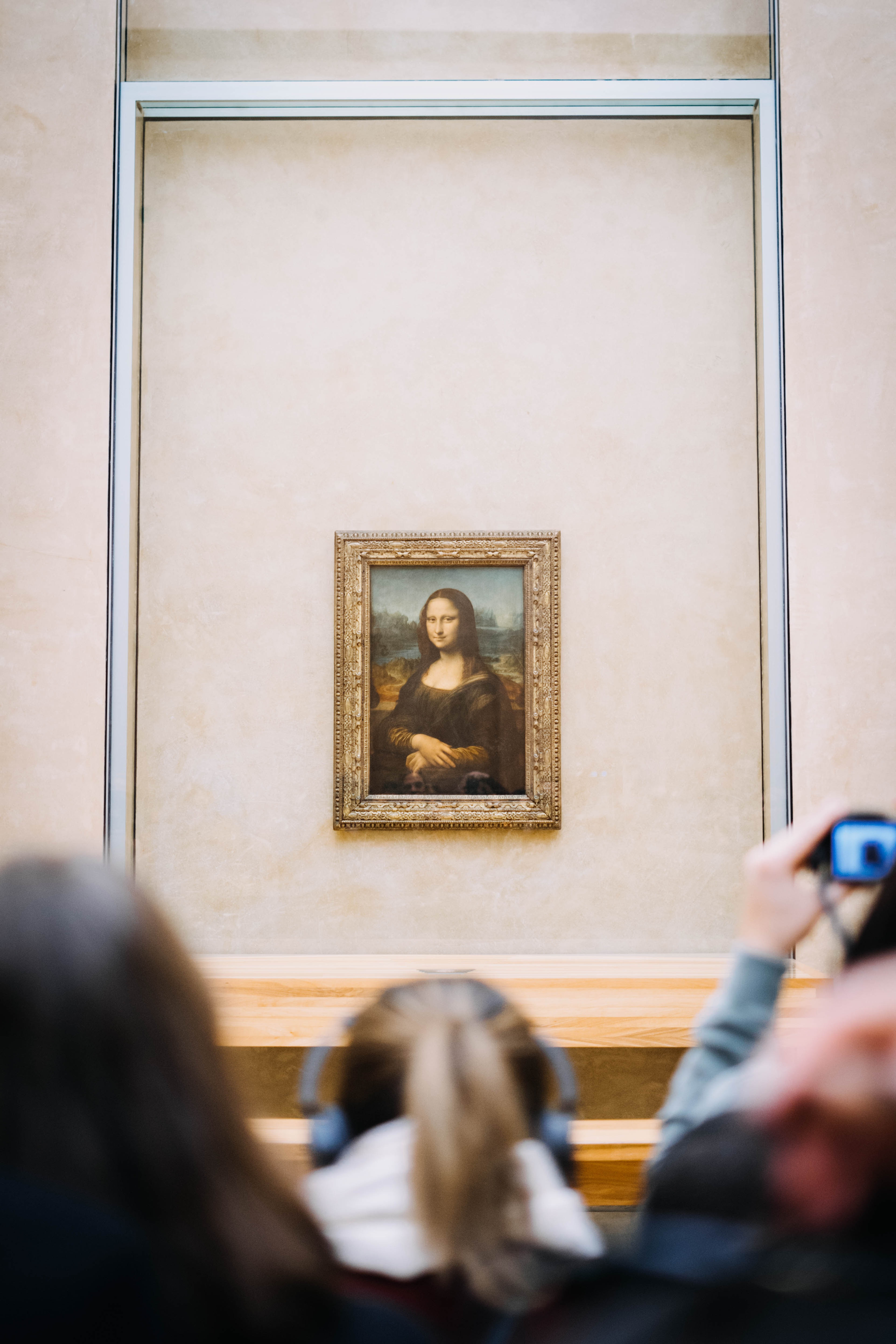More than half of the population has never even seen the Mona Lisa in real life, and yet, almost everyone recognizes her haunting eyes and mysterious smile.
So how did she become this renowned? Why do 10.2 million people flock to The Louvre in Paris to see it? Perhaps, its because the portrait was painted by the accomplished Renaissance artist Leonardo Da Vinci. Maybe, she gained fame after Nat King Cole released his hit Mona Lisa in the 1950s. It could be because her face is plastered on billions of t-shirts, coffee mugs, phone cases, and among other merchandise.
While those reasons contribute to the paintings acclaim, the Mona Lisa skyrocketed to fame the morning of August 21, 1911, when Italian handyman, Vincenzo Peruggia, snatched the painting right off the walls of The Louvre.
It occurred early Monday morning, when the Louvre was closed. It was tradition at the time to spend Sunday nights exploring the city and partying until the very early hours of the morning. While the whole city of Paris was sleeping off the previous night of enjoyment, an amateur painter arrived at the museum with only one goal in mind: to paint a replica of the Mona Lisa. One can imagine his disappointment when he set up all his paints and his easel only to realize that the spot where the painting was supposed to be was empty.
At the time, the Louvre would regularly remove paintings from their spots and photograph them on the roof. Security guards operated under this assumption for 24 hours, until they couldnt locate the painting anywhere in the museum.
Twenty-four hours earlier, Italian handyman Vincenzo Peruggia, hired by the museum to create glass cases for all its paintings, ended up hiding out in a storage closet overnight. Once morning rolled around, he slipped the painting from its frame, hid it under his smock, and quickly made a run for the exit. At the time, the Mona Lisa wasnt the most famous painting in The Louvre, and there were barely any alarms or guards stationed around it.
After hiding the painting under his smock, Peruggia fled the scene only to reach his first obstacle, a jammed door knob. Lucky for Peruggia, a plumber passing by was able to help him remove the door knob to escape. Little did the plumber know that he aided in a theft that would soon make headlines.
With the painting in tow, Peruggia then traveled over to Quai dOrsay, a street along the Seine, where he awaited his only means of escape, a 7:47 am train out of the city. Just as quickly as he stole the painting, did boarded the train and officially started a two year long manhunt for the thief who stole the Mona Lisa.
The Mona Lisa made headlines as the French press continued to use the theft as a way to poke fun at the mismanagement of the Louvre. The theft launched the Mona Lisa into the spotlight, and it soon became a household name, as articles about its disappearance circulated worldwide.
Police believed the thief would hold the painting ransom, as it had become too famous in the days after the robbery to sell without getting caught. But to the surprise of the public, Peruggia never came forward. Instead the Mona Lisa remained hidden in the false bottom of a trunk in Perguggias Paris boardinghouse, where it sat, collecting dust, as the world around it eagerly awaited for its return.
A break in the case came when Alfredo Geri, an art dealer in Florence, received a letter from an anonymous source claiming to have the Mona Lisa in possession. Intrigued, Geri met with the dealer at the Uffizi Gallery, only to realize that his lead was Peruggia. Geri was able to confirm the stamp of authenticity on the back of the painting and convinced the thief to store the painting at the gallery for safekeeping. Little did Peruggia know it would be the last time he would ever see Mona Lisas soul-stirring eyes. Geri instantly called the police, and upon Perrugias return to his apartment, the police were already waiting there to arrest him.
Peruggia ended up pleading guilty, and only had to serve seven out of the twelve months and 15 days he was sentenced for. Peruggia never truly explained why he stole the painting. Writer and historian, James Zug states, [Peruggia] said later that he was trying to return it to Italy that he was a patriot and it was stolen by Napoleon and he was trying to return it to the land of his birth, Some choose to believe this excuse. It is an excuse many other art thieves have used throughout history. Others think Peruggia was just saying it to get a lighter sentence.
Either way, Peruggia could have never predicted that by stealing the Mona Lisa, he single- handedly launched an ordinary painting to its superstar status overnight.
Citations
The Theft That Made The Mona Lisa A Masterpiece. (2011, July 30). NPR. https://www.npr.org/2011/07/30/138800110/the-theft-that-made-the-mona-lisa-a-masterpiece
McArdle, T. M. (2019, October 20). How the 1911 theft of the Mona Lisa made it the worlds most famous painting. Washington Post. https://www.washingtonpost.com/gdpr-consent/?next_url=https%3a%2f%2fwww.washingtonpost.com%2fhistory%2f2019%2f10%2f20%2fhow-theft-mona-lisa-made-it-worlds-most-famous-painting%2f
McKenzie, B. F. S. C. (2013, November 19). Mona Lisa: The theft that created a legend. CNN. https://edition.cnn.com/2013/11/18/world/europe/mona-lisa-the-theft/index.html
 Ella Platts, Alumni at UCTech
Ella Platts, Alumni at UCTech 
 Album Review: Nectar by Joji
Album Review: Nectar by Joji